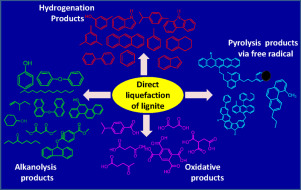当前位置:
X-MOL 学术
›
Chin. J. Catal.
›
论文详情
Our official English website, www.x-mol.net, welcomes your
feedback! (Note: you will need to create a separate account there.)
Direct liquefaction techniques on lignite coal: A review
Chinese Journal of Catalysis ( IF 15.7 ) Pub Date : 2020-03-01 , DOI: 10.1016/s1872-2067(19)63492-3 Arif Ali , Chen Zhao
Chinese Journal of Catalysis ( IF 15.7 ) Pub Date : 2020-03-01 , DOI: 10.1016/s1872-2067(19)63492-3 Arif Ali , Chen Zhao

|
Abstract With the pressure owing to fossil oil shortages, direct liquefaction is attracting significant attention as a highly efficient and low-cost technique for lignite-to-fuel conversion. In this review, the diverse catalytic systems and mechanisms involved in lignite liquefaction are reviewed. The top five global technologies include IGOR (Germany), HTI (the USA), FFI (Russia), NEDOL (Japan), and Shenhua (China), which have already been applied in industrial scales. Among the five technologies, Shenhua (China) outputs as high as 3000 t/d using a suspended bed reactor, iron-based catalyst, and rehydrogenated recycled solvents (paraffin, aromatics, etc.). The conversion of lignite is quite difficult due to the presence of ionic bond and non-covalent interactions, such as hydrogen bonding; thus, it is well recognized that the catalytic liquefaction under relatively mild conditions is more feasible than non-catalytic liquefaction. Iron-based catalysts can efficiently facilitate the lignite liquefaction and promote the lignite cracking aided by a hydrogen-donor solvent; thus, they have attracted interest from researchers globally. The different liquefaction mechanisms of lignite including free radical, oxidation, alkanolysis, and hydrogenation lead to the corresponding products: preasphaltene and asphaltene, mixed carboxylic acids, mixed esters and ethers, and cyclic compounds, respectively. Therefore, the catalytic system of the lignite liquefaction process would be accordingly optimized and modified to afford different products.
更新日期:2020-03-01











































 京公网安备 11010802027423号
京公网安备 11010802027423号